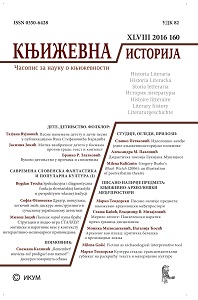Fiction as Archaeological Interpretative Tool
Fiction as Archaeological Interpretative Tool
Author(s): Milena Gošić AramaSubject(s): Archaeology, Serbian Literature
Published by: Институт за књижевност и уметност
Keywords: prehistory;chalcolithic;alternative narratives;semi-fictional;ritual;metalworking;recombinant history;
Summary/Abstract: The paper aims to establish in which way writing fiction can be useful for archaeological interpretation, not only as a way of presenting our work to the public, but as a method of acquiring new insights about the past. Chalcolithic metallurgy of the Southern Levant is taken here asan archaeological case study and the semi-fictional story is a reconstruction of rituals that surrounded the metallurgical process. The idea is to present the semi-fictional reconstruction that shows what is actually based on archaeological data on one hand and, on the other hand, what elements were imagined in a certain way. Two distinct strategies of constructing such alternative narratives are discussed and the one that appears to be particularly suitable, both in terms of writing and presenting, is the presentation based on the concept of the recombinant history. It is proposed that short semi-fictional vignettes of the past should be added to interpretations, both because of the valuable questions that arise from the process of writing them and the interactive way in which they can be presented to the public.
Journal: Књижевна историја
- Issue Year: 48/2016
- Issue No: 160
- Page Range: 199-220
- Page Count: 22
- Language: English

